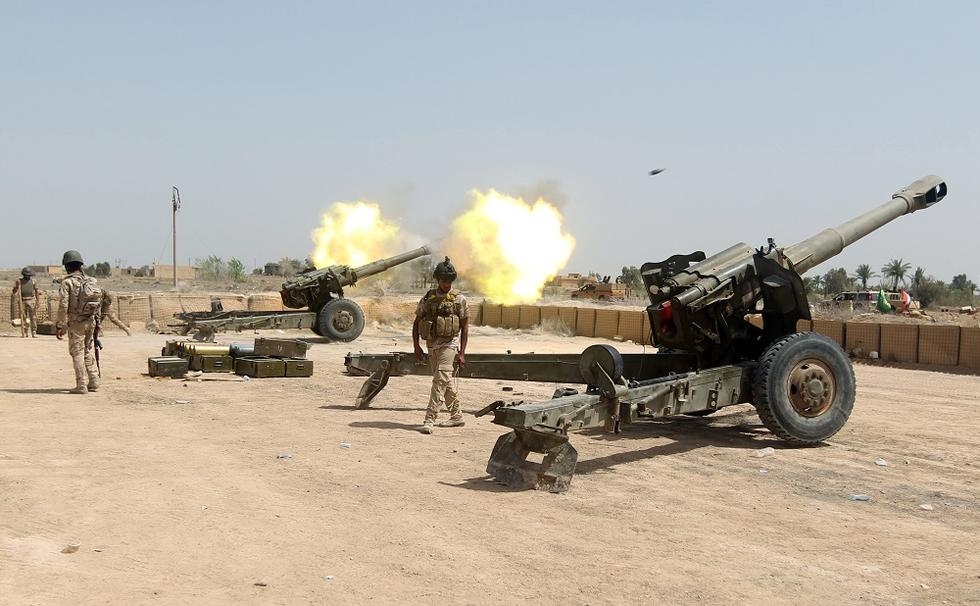IS suffers string of defeats in Syria but gaining in Iraq's Ramadi

A United States Special Forces raid has killed 32 members of Islamic State in eastern Syria, including four senior officials, a monitoring group said on Sunday. The raid on al-Omar, one of the largest oilfields in the Deir Ezzor governorate, is mostly under the control of Islamic State.
The operation marked a shift in the US-led coalition’s war on IS. This is the first time that the US has admitted to putting boots on the ground in Syria, where its operations have until now officially been confined to airstrikes.
While last year US President Barack Obama repeatedly stressed that there would be "no boots on the ground" in February he wrote a letter asking Congress for the authorisation to send troops into specific combat operations. However, his letter is largely seen as a faith-building measure with the Republican-dominated Congress as Obama has the authority to singlehandedly authorise such action without their approval.
“The US operation killed 32 members of IS, among them four officials, including IS oil chief Abu Sayyaf, the deputy IS defence minister, and an IS communications official,” said Rami Abdel Rahman, the head of the Syrian Observatory for Human Rights.
US officials said that “about a dozen” people were killed in the operation, which involved “hand-to-hand combat” and was implemented by Iraq-based US commandos in order to capture Abu Sayyaf.
A US defence official told AFP that members of the elite Delta special operations unit descended on Abu Sayyaf’s compound in Black Hawk helicopters and Osprey tilt-rotor aircraft, in a move that was not discussed with Syrian President Bashar al-Assad.
Bernadette Meehan, the White House national security spokeswoman, told reporters that Abu Sayyaf “was killed when he engaged US forces”.
Abu Sayyaf’s wife was captured in the raid and is being held in military detention in Iraq.
US Secretary of Defence Ash Carter called the operation a “significant blow” to IS, while Adam Schiff, a Democrat on the House intelligence committee, said the US attacks “have put increasing pressure on the economics undergirding the terrorist organisation”.
Hundreds killed in Palmyra battle
IS has also found itself on the defensive in central Syria where it had launched an offensive against the government-controlled ancient city of Palmyra. The city, much of which is designated a UNESCO world heritage site, has seen days of heavy fighting, prompted fear that the site would be demolished by IS, following in the pattern of their similar acts carried out on ancient sites in Iraq such as Mosul and Nimrod.
While IS appeared to be making progress, seizing the northern part of the town on Saturday morning, government troops have since managed to roll back the IS advance although fighting is still taking place, the Syrian Observatory for Human Rights said.
"There are still clashes - though not very fierce - in the northern suburbs of al-Amiriyah," said Observatory director Rami Abdel Rahman.
"IS is still present outside the city, to the south and east."
According to the Observatory, almost 300 people were killed in clashes. The army’s casualties were more than IS, with 123 Syrian soldiers and 115 IS fighters killed. Almost 60 civilians were also killed.
Provincial governor Talal Barazi also confirmed that Tadmur, about 2 kilometres from the city, was back in the Syrian army’s control.
“IS’s attack was foiled, and we ousted them from the northern parts of Tadmur,” Barazi told AFP. “The army is still combing the streets for bombs.
He said that humanitarian assistance for Tadmur must be secured to accommodate the influx of civilians fleeing IS.
“We are taking all necessary precautions, and we are working on securing humanitarian aid quickly in fear of mass fleeing from the city,” he said.
Mamoun Abdulkarim, Syria’s antiquities chief, also cautioned that the danger to Palmyra was far from over.
“There was no damage to the ruins, but this does not mean we should not be afraid,” Abdulkarim said, who described “living in a state of terror” at the thought that IS would destroy Palmyra’s architectural treasures.
IS was able to reach Palmyra by launching a lightning offensive from their stronghold in the Euphrates Valley in Iraq over the desert to Syria.
The area is also seen as strategically key. It houses a military base, is in close proximity to a major oil field and would help IS to link its positions in the north and south.
Thousands displaced in Ramadi
While IS appears to have been put on the defensive in Syria, the group continues to gain ground in Iraq, where it looks set to take full control of Ramadi, the capital of Anbar province and about 100 kilometres west of the capital, Baghdad.
By triggering a succession of suicide car bombs, the militant group was able to take over central neighbourhoods in the city on Friday. The heavy fighting that ensued prompted thousands of people to flee the city. The International Organisation for Migration said on Sunday that the fighting in Ramadi has displaced around 8,000 people in two days.
“The numbers are increasing,” the IOM said.
Government forces are confined to a few districts in the city and are waiting to receive reinforcements promised by Iraqi Prime Minister Haider al-Abadi.
The displaced families made their way to Amriyat al-Fallujah in the east, but have not been allowed to cross the Euphrates River and enter Baghdad province.
Ramadi has been hard hit by violence in recent months, with IS launching another offensive last month.
The IOM said that since the beginning of 2014, the number of displaced people in Iraq has reached a record of more than 2.8 million.
Middle East Eye propose une couverture et une analyse indépendantes et incomparables du Moyen-Orient, de l’Afrique du Nord et d’autres régions du monde. Pour en savoir plus sur la reprise de ce contenu et les frais qui s’appliquent, veuillez remplir ce formulaire [en anglais]. Pour en savoir plus sur MEE, cliquez ici [en anglais].




